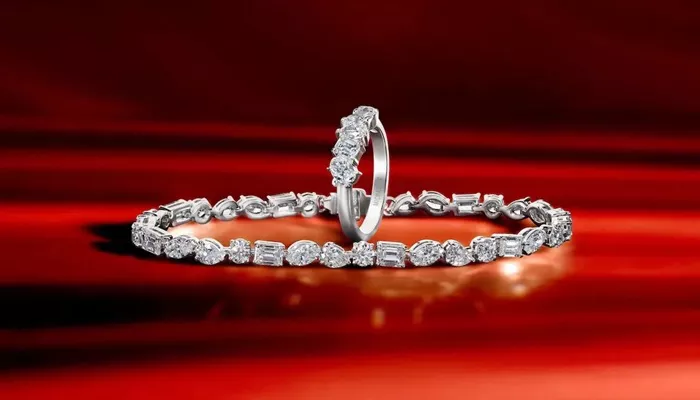Michael M, a luxury jewelry brand known for its engagement rings and wedding pieces, is keeping its prices steady despite facing some tariff-related challenges in its supply chain.
The company is mainly based in the United States and assembles most of its jewelry at a large facility in California. It sources most of its materials, such as diamonds and recycled gold, from U.S. suppliers. However, the diamonds originally come from other countries and face tariffs when imported into the U.S.
Michael M also works with international suppliers. For example, it gets jewelry backings from Italy, runs a manufacturing plant in Armenia (which produces about 5% of its jewelry), and sources boxes and bags from India. All imports from these countries are subject to a 10% tariff introduced by the U.S. in April. There is a possibility that these rates could rise due to U.S. President Donald Trump’s proposed “reciprocal tariffs.” This could also affect the countries where diamonds originate.
Despite this, Michael M’s CEO, Peter Meksian, told Modern Retail that the tariffs have not been large enough to force a price increase. He said, “So far, we have not seen increased costs for our diamonds. The overseas materials we use are too small a part of our costs to affect our prices.” Meksian added that the company plans to keep prices stable.
Founded in 2008 by father and son Michael and Peter, Michael M designs its jewelry in Los Angeles. Each piece carries a unique serial number and a certificate of authenticity. The brand sells online and through selected U.S. jewelers like Robbins Brothers and Lee Michaels. Their jewelry prices range from a few hundred dollars to over $100,000.
In early April, Michael M reassured its vendors with an email stating, “Tariffs won’t affect Michael M.” The message highlighted the company’s handcrafted production in its California facility and said, “Our supply chain has not been disrupted. While others scramble to raise prices or find new suppliers, we remain steady. Retail partners can order with confidence.”
The jewelry industry overall has been shaken by tariffs on materials from gems to metal clasps. Recently, Danish company Pandora warned that further tariff increases could cause significant price hikes in the industry. Meanwhile, the World Diamond Council is appealing to the U.S. government to exempt diamonds from tariffs.
Sales at Michael M have increased by 50% in recent months, according to the company.
However, many jewelers have yet to respond fully to tariffs. A survey by Rapoport showed only 10% of diamond and jewelry businesses have changed suppliers or adjusted strategies due to tariffs. Forty percent plan to make changes, and half do not expect to make adjustments.
Most jewelers rely heavily on supply chains in Asian countries like China, Thailand, Vietnam, and India. The tariff effects have been “very tough” on the industry, but Meksian said Michael M has benefited because it sources and assembles primarily in the U.S. The California facility employs about 100 people, with 70 in the workshop and 30 in sales and administration.
Meksian noted that U.S. customers and retailers are showing more interest in Michael M because of its domestic manufacturing. The brand does not sell in department stores but is working to expand wholesale accounts. He said, “Retailers are prioritizing us because they see us as a secure and consistent partner.”
Interestingly, before tariffs made local manufacturing more attractive, “made in the U.S.” was sometimes a disadvantage, Meksian explained. Customers often assumed U.S.-made meant more expensive, without considering the actual prices or materials used.
Melissa Minkow, director of retail strategy at consultancy CI&T, told Modern Retail that Michael M is an unusual case. Most brands face more pressure from tariffs because they rely on overseas manufacturing. She added that luxury brands like Michael M may absorb tariff costs more easily due to their higher profit margins. “Luxury brands can manage these costs better, while lower-cost companies suffer the most,” she said.
Luxury companies have reported mixed results in recent months. For example, LVMH, owner of Tiffany, reported a 1% increase in jewelry and watch sales in the last quarter. Meanwhile, Signet Jewelers is closing stores and cutting staff amid falling revenues.
Related topics:
- Elbaite: The Stunning Gemstone of Colors and Symbolism
- National Jewellery Retailer Expands with New Store in Worthing
- India’s Gems and Jewellery Exports Fall by 4.62% in April


